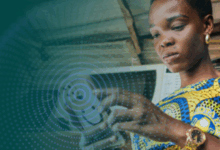
Kenya is digitally an insecure environment despite having a highly engaged online population. This is according to the Navigating Kenya’s Digital Information Ecosystem report by Kenya Safe and Inclusive Digital Space (KenSafeSpace).
KenSafeSpace is a multi-stakeholder project funded by the European Commission, focused on empowering Kenyan human rights organizations. Its goal is to enhance their voice, capacity, and influence to promote and protect a democratic, safe, and inclusive digital environment.
KenSafeSpace supports human rights civil society organisations, media professionals and individuals in Mombasa, Nairobi, Nakuru, Kisumu and Eldoret to be able to accurately identify, monitor and respond to online disinformation, hate speech, cyberbullying and other digital risks.
The firm does this through delivering a combination of targeted research, tailored training and tools and innovative human-centred and rights-based solutions.
These groups formed Key Informant Interviews (KIIs) and Focus Group Discussions (FGDs) that informed the study.
The project consists of Internews which works in collaboration with KICTANet, Internet Without Borders, Mzalendo Trust, Bloggers Association of Kenya (BAKE), Tribeless Youth and Watoto Watch Network.
The study, which was conducted between April and July 2024 utilised Internews’ Information Ecosystem Assessment Model, which takes a human-centred approach to capture all dimensions of the relationship between information consumers and information supply.
It all seeks to understand information behaviours in tackling digital threats and risks in relation to digital media and AI, key human rights issues that may be affected or exacerbated by harmful information online, and the digital policy gaps and readiness in Kenya.
Other objectives of the report included analysing trends in digital threats and risks including harmful speech, unethical use of AI, technology-facilitated GBV and other threats affecting citizens.
They include under-represented and marginalised groups like children, youth and indigenous people to also analyse existing policies and regulations affecting digital rights.
Increased cyber threats
According to the study, the latest statistics by the Communications Authority of Kenya (CA) indicated that there were 1.3 billion cyber threats detected in just the second quarter of the 2023/24 financial year.
This marked a staggering 943% increase from 124 million in the previous quarter. This averages out to 1.4 million threats per day.
During the same quarter, the CA report noted that 8.1 million cyberthreat advisories were issued for Kenya, a 44.4% rise from the previous quarter’s 5.6 million.
The study identified six groups of digital threats and at least 25 individual digital threats and risks.
“The groups include cyber threats, social threats, financial threats, identity theft, AI-related risks and regulatory concerns,” the study read in part.
“Under these groups, there are hacking, phishing, mis/disinformation, online harassment, financial fraud, data and identity theft, scamming and unethical use of AI.”
“Other acknowledged threats include malware, ransomware, and impersonation, online child abuse, OGBV as well as online blackmail and extortion.”
“Others include body shaming, illegal betting, exclusion and sextortion.”
The report further noted that of great concern were harmful online behaviour such as addiction, and speech such as deep fakes, radicalisation, hate speech, discrimination and social engineering.
It highlighted that these threats affect certain demographics more than others.
Children were flagged as being particularly vulnerable online with cyberbullying and online grooming posing significant risks globally, including Kenya.
Another group whose vulnerability online was emphasised is women.
“These individual threats and risks collectively highlight the diverse challenges posed by digital advancements and the need for comprehensive strategies to mitigate their impact on individuals, communities and societies,” the study read.
“Instructively, that these threats came up in FGDs, and yet actually constitute the entire spectrum of digital threats and risks, proves that a significant number of Kenyans are aware of prevalent digital threats and risks.
Kenya has a highly engaged online population
Another significant finding of the study is that Kenya has a highly engaged online population, particularly the youth, who are active participants in online platforms like X.
However, males are dominating this space by far.
In the cyber sphere, Kenya boasts a thriving ecosystem of blogs, social media platforms and online news sites.
With over 35,000 blogs and an active presence on platforms like Facebook, X, Instagram and TikTok, digital media has emerged as a powerful source in shaping public opinion and driving conversations.
“Statistics by Data Reportal 2024 shows that of the 13.05 million social media users in the country as of January 2024, 56.8% were male while 43.2% were female,” the study reads.
“This is a sobering statistic when you consider that there are more females (50.4%) than males (46.9%) in the population of Kenya.”
According to the Data Reportal 2024 survey, 57% of men use Facebook while 43% of women use the platform.
With TikTok and YouTube, 56% of men use these platforms as compared to 44% of women.
With LinkedIn, 60% of men make use of the platform while 40% of women use it. With Instagram, the percentage is split 50-50 for both women and men.
On Snapchat, the survey further indicated that 35% of men use the platform compared to 65.9% of women.
On Facebook Messenger, 59% of men use the platform as compared to 41% of women while on X, 74% of men were recorded to use the platform as compared to 26% of women.
“Statistically, there’s 110% mobile phone subscriptions in Kenya (slightly more than half of those are smartphones), and almost a half of the country’s population is online. Almost a quarter of its population uses social media,” the report read.
In figures, there were 67 million mobile subscribers by the second quarter of the 2023-24 financial year, with 34 million smartphones in use.
“This underscores the widespread access to digital media platforms via mobile devices. This high number of smartphone users indicates a large and growing audience for digital content, with attendant risks and threats.”
According to the report, from the FGDs conducted, most participants are active online, all respondents use smartphones to access news and information, news and entertainment are the key content categories consumed on digital media. Most participants were aware of AI and all participants agreed that AI should be regulated.
Instructively, however, young people complained of being left out of digital governance issues.
“A young FGD participant from Mombasa claims they are not consulted on digital issues, including policy-making,” the study reads.
Further, in mapping digital sources of information, besides social media platforms, online news websites such as Citizen Digital, Nation and Star were said to serve as reliable sources of information for many individuals.
According to the FDGs, they offer credibility, depth of coverage and easy accessibility, allowing users to delve into various issues with comprehensive reporting.
However, the presence of paywalls, clickbait headlines and biased reporting were indicated as posing challenges to users seeking unbiased and informative content.
Additionally, blogs and specialised websites were said to offer niche content and foster (special interest) community engagement through interactive features like comment sections. While they provide valuable insights, and a more informal tone compared to traditional news sources, concerns about credibility, limited depth and subjective content exist.
On email and messaging apps like WhatsApp and Telegram, the report noted that even though they facilitate direct communication, formal and informal and fast dissemination of information, participants said they are vulnerable to spamming.
They also noted that they tend to spread misinformation, which poses challenges to users seeking reliable and non-intrusive communication channels.
“On AI, participants identified the technology both as a tool as well as a source of digital information. ChatGPT and Grammarly were viewed as great in enhancing productivity and creativity by assisting users in writing and content generation,” the report reads.
“However, concerns about attention span decline, authenticity and algorithmic bias raised questions about the long-term implications of AI-driven content creation.”
Other significant findings included the majority of Kenyans being overwhelmed by digital onslaughts, vague and overly broad regulations limiting digital safety and rights and an unaccountable telco and private sector.
“Participants decried the lack of enforceable refund policies for telecommunication companies when it is established that customers have lost money or valuable info to cyber criminals through no direct fault of the customers,” the study added.
“Others include low media and digital literacy and critical thinking skills, the emergence of education and journalism as pivotal battlegrounds in the fight against digital threats affecting freedom of expression and personal agency rights as well as the realisation that there are real-life consequences for illegal or irresponsible online activity.”
Some actionable recommendations made by the report to KenSafeSpace included conducting training for journalists and content creators, as well as digital literacy and critical thinking training.
The project was also urged to work with policy research and engagement organisations to influence policy in the digital environment and collaborate with government and civil society organisations in public awareness campaigns about digital security and responsible online behaviour.
The government was urged to engage youth in internet governance, promote digital literacy, reform education to move the country into the digital age, institute ethical AI practices, regulate with vision, establish an independent entity to address cybercrime and connect the unconnected and underserved.
Civil society was called upon to conduct public awareness campaigns, community engagement and support as well as lobby for progressive digital safety laws and their implementation.
The report recommended that telecommunication companies and the private sector should provide empowerment and security tools to vulnerable groups as well as take responsibility for providing safe services for their users.
It noted that there are actions citizens – people and corporates- can also take individually to improve digital security.
“Being safe online is first and foremost and ultimately, a personal responsibility because each entity is accountable for their actions and well-being everywhere. The digital space is no different,” the report reads.
“It involves understanding the risks associated with online activities, protecting personal and corporate information from misuse, and considering the broader impact of an entity’s behaviour on others.”
“Adhering to legal and ethical guidelines, staying informed about cybersecurity threats, and actively managing one’s digital presence are essential for creating a safer online environment for everyone.”
Follow us on Telegram, Twitter, and Facebook, or subscribe to our weekly newsletter to ensure you don’t miss out on any future updates. Send tips to editorial@techtrendsmedia.co.ke


